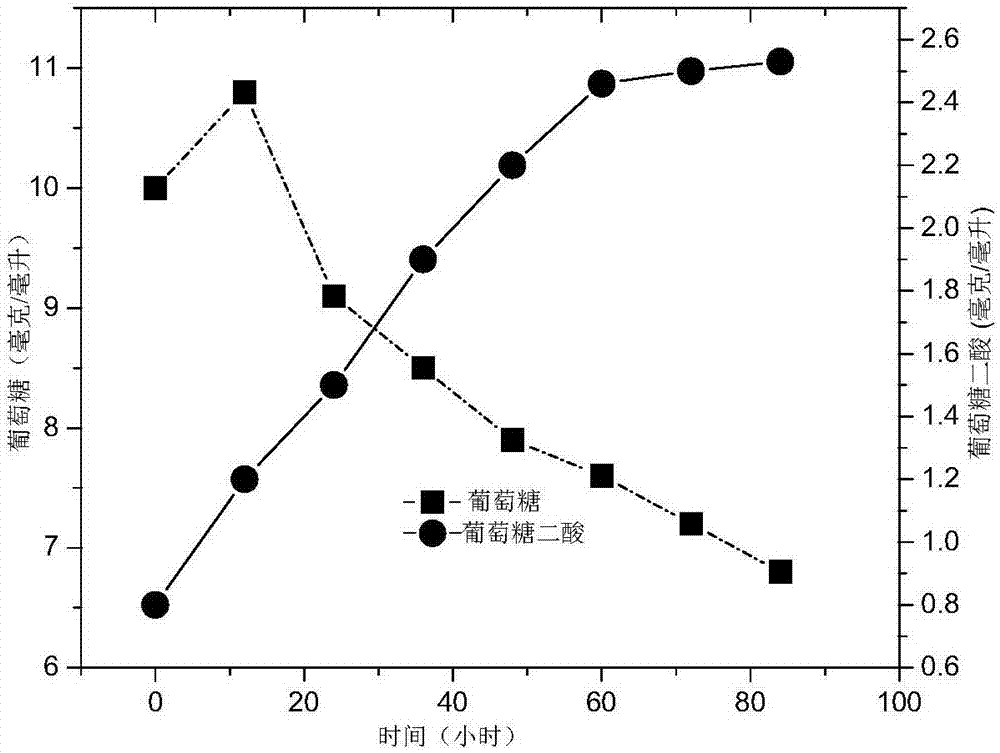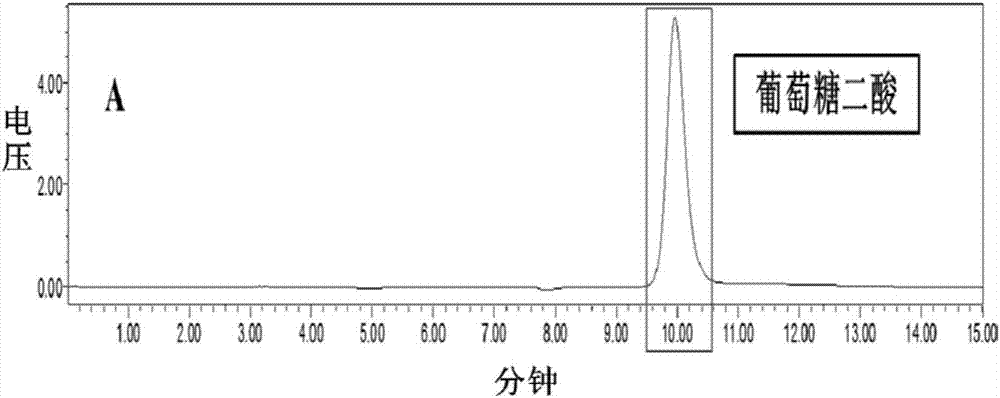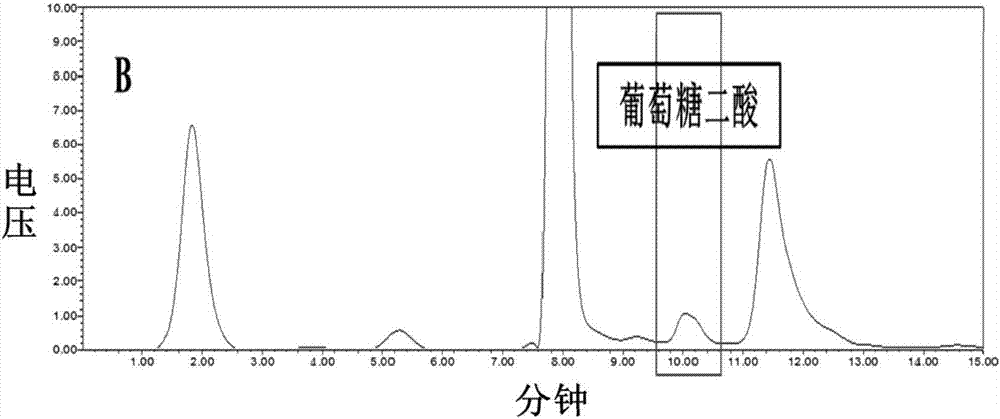Recombinant escherichia coli, construction method thereof and method for producing glucaric acid by virtue of metabolic engineering
A technology of recombinant Escherichia coli and a construction method, which is applied in the field of metabolic engineering, can solve the problems of low glucaric acid content, difficult extraction, separation and purification, etc., and achieves the effects of high expression level, cheap culture and low nutritional requirements
- Summary
- Abstract
- Description
- Claims
- Application Information
AI Technical Summary
Problems solved by technology
Method used
Image
Examples
Embodiment 1
[0045] Example 1 Construction of Recombinant Escherichia coli E.coli BL21(DE3) / Ino1-MIOX
[0046] Using the tomato (Solanaceae Lycopersicon 1706) genome as a template to amplify Ino1 gene and MIOX gene, using Ino1-F (sequence shown in SEQ ID NO.7) and Ino1-R (sequence shown in SEQ ID NO.8) as primers To amplify the Ino1 gene, use MIOX-F (sequence shown in SEQ ID NO.9) and MIOX-R (sequence shown in SEQ ID NO.10) as primers to amplify the MIOX gene. The obtained Ino1 gene and MIOX gene were connected to the expression vector pETDuet1 (purchased from Novegen Company) with corresponding cuts through the restriction sites at both ends of the primers, and then transformed into DH5α (purchased from Quanshijin Company) In the process, the recombinant expression plasmid pETDuet1-Ino1-MIOX was identified under the precursor to ensure the correct reading frame, and the sequence was correct after sequencing and alignment. The recombinant plasmid was chemically transferred into the expres...
Embodiment 2
[0047] Example 2 Construction of Recombinant Escherichia coli E.coli BL21(DE3) / Ino1-MIOX-Udh
[0048] Udh gene was amplified with the Agrobacterium tumefaciens GV3103 genome as a template, and Udh-F (sequence shown in SEQ ID NO.11) and Udh-R (sequence shown in SEQ ID NO.12) were used as primers to amplify The Udh gene was amplified, connected to the expression vector pET28a (purchased from the BioVector Plasmid Vector Strain Cell Gene Collection Center) with corresponding cuts through the double restriction site on the primer, and transformed into E.coli DH5α (purchased from Quanshijin company), under the premise of ensuring the correct reading frame, the recombinant expression plasmid pET28a-Udh was identified, and the recombinant sequence was correct after DNA sequencing comparison. The recombinant plasmid was chemically transferred into the expression host E.coli BL21(DE3) / Ino1-MIOX constructed in Example 1, and the correct recombinant Escherichia coli was screened and name...
Embodiment 3
[0052] Embodiment 3 Recombinant escherichia coli fermentation produces glucaric acid
[0053] The recombinant Escherichia coli E. coli BL21(DE3) / Inol-MIOX-Udh was fermented and cultured. Inoculate the monoclonal recombinant Escherichia coli E. coli BL21(DE3) / Ino1-MIOX-Udh in 25ml of LB medium (tryptone 10g / L, yeast extract 5g / L, sodium chloride 10g / L, pH7) , cultivated at 37°C, 180rpm for 16h. Then inoculate to 50ml (shake flask capacity is 500ml) fermentation medium (tryptone 10g / L, yeast extract 5g / L, sodium chloride 10g / L) by 2% inoculum amount to ferment again, add when OD600 is 0.6 The inducer IPTG was used to make the concentration 0.2mM, and at the same time, glucose was added to make the concentration 10g / L, and the temperature was 30°C, and the shaker speed was 180rpm, and cultured for 100 hours. After the cultivation, 1ml of the fermentation broth was taken and centrifuged at 12000rpm for 5min, and the supernatant was filtered through a 0.22um filter membrane, and ...
PUM
 Login to View More
Login to View More Abstract
Description
Claims
Application Information
 Login to View More
Login to View More - R&D
- Intellectual Property
- Life Sciences
- Materials
- Tech Scout
- Unparalleled Data Quality
- Higher Quality Content
- 60% Fewer Hallucinations
Browse by: Latest US Patents, China's latest patents, Technical Efficacy Thesaurus, Application Domain, Technology Topic, Popular Technical Reports.
© 2025 PatSnap. All rights reserved.Legal|Privacy policy|Modern Slavery Act Transparency Statement|Sitemap|About US| Contact US: help@patsnap.com



